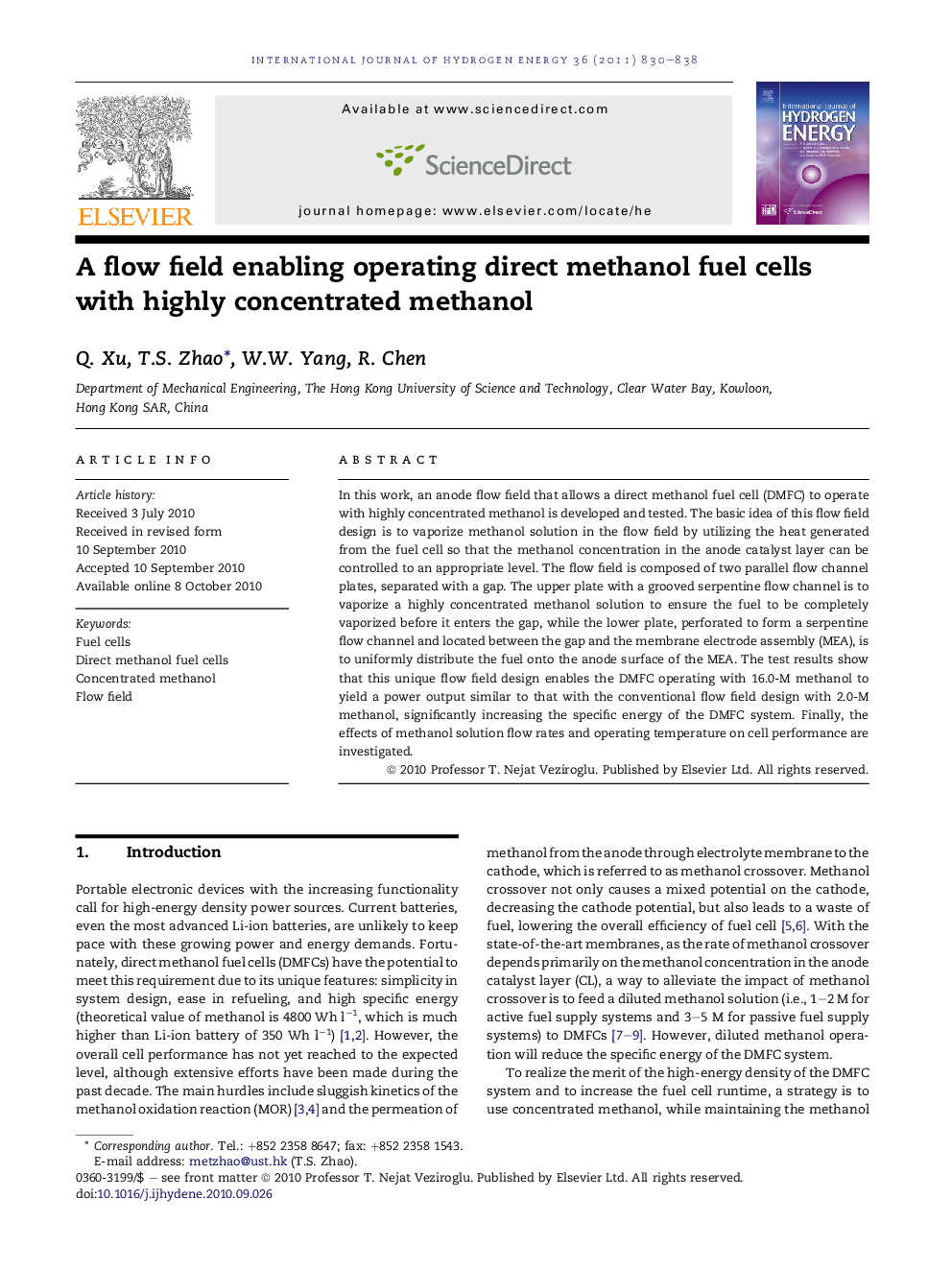| Article ID | Journal | Published Year | Pages | File Type |
|---|---|---|---|---|
| 1277839 | International Journal of Hydrogen Energy | 2011 | 9 Pages |
In this work, an anode flow field that allows a direct methanol fuel cell (DMFC) to operate with highly concentrated methanol is developed and tested. The basic idea of this flow field design is to vaporize methanol solution in the flow field by utilizing the heat generated from the fuel cell so that the methanol concentration in the anode catalyst layer can be controlled to an appropriate level. The flow field is composed of two parallel flow channel plates, separated with a gap. The upper plate with a grooved serpentine flow channel is to vaporize a highly concentrated methanol solution to ensure the fuel to be completely vaporized before it enters the gap, while the lower plate, perforated to form a serpentine flow channel and located between the gap and the membrane electrode assembly (MEA), is to uniformly distribute the fuel onto the anode surface of the MEA. The test results show that this unique flow field design enables the DMFC operating with 16.0-M methanol to yield a power output similar to that with the conventional flow field design with 2.0-M methanol, significantly increasing the specific energy of the DMFC system. Finally, the effects of methanol solution flow rates and operating temperature on cell performance are investigated.
